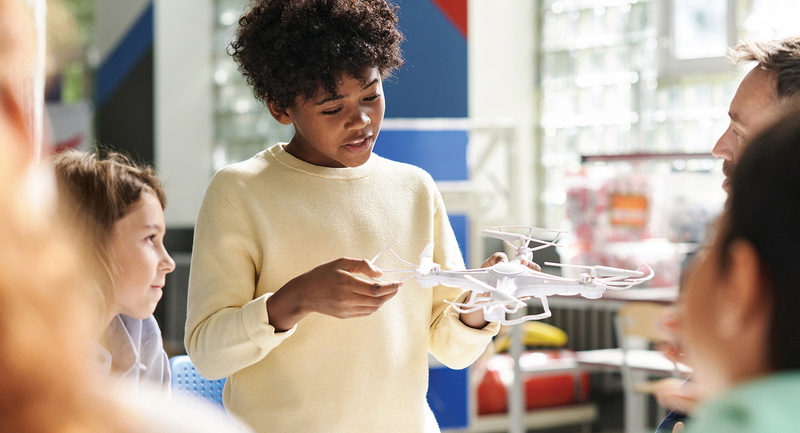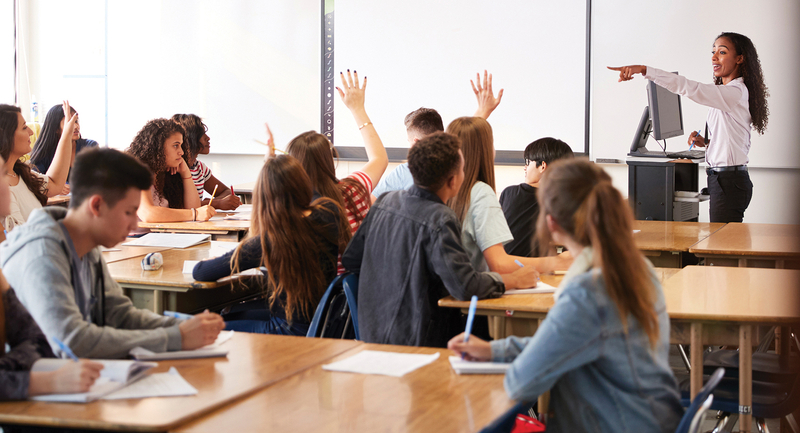Transformational Learning Principle
Guide—Develop Expertise: Educators use evidence-based practices to ensure students learn and develop essential skills and knowledge. They frame learning around key conceptual understandings, use multiple modes of presentation and inquiry, model skills, and prioritize intentional practice.
Why should we care about helping students develop expertise? The notion of expertise might seem a hopelessly lofty aspiration for students—if not superfluous to the realities of modern classrooms. I mean, can a 10-year-old really be an expert in anything?
Yet, when it comes to learning, the mental processes we use to develop expertise are the same ones our brains use to store and retrieve knowledge in any endeavor, be it mathematics, art, music, or fly fishing.
Insights into how we develop expertise emerged decades ago in an interesting experiment conducted on a group of quintessential experts: chess grandmasters (de Groot, 1966). These champions had the uncanny ability to memorize the placement of pieces on a chessboard mid-game; after a quick glance at the board, they could recall the placement of each piece with nearly perfect accuracy. One might assume they were naturally gifted with photographic memories and that their expertise was born, not made.
But when those same grandmasters were shown chess pieces placed randomly on the board and not as the result of game play, they had no greater ability to recall their placement than novice players. In short, the grandmasters weren’t memorizing the chessboard per se but rather drawing upon deep knowledge of the game to develop a mental picture of how the pieces wound up in their present location. They used that understanding to reconstruct the board.
The Importance of Prior Knowledge
Therein lies the essence of expertise. It’s not innate talent or encyclopedic knowledge. Rather, it’s the ability to draw upon prior knowledge to size up problems and how they might be solved—and then using that knowledge to retrieve previously applied solutions to those problems. Over the years, researchers (e.g., Brand-Gruwel, Wopereis, & Vermetten, 2005; Newell & Simon, 1972) have shown that the expert ability to identify and solve problems requires the development and refinement of mental models or schema. Mental models help experienced doctors diagnose diseases, skilled mechanics resolve a pinging noise in a car’s engine, and veteran quarterbacks read a defense and call a different play. They’re also how we store and retrieve new learning. That’s because our brains don’t store new learning in tidy mental filing cabinets, but rather in complex, interconnected networks of information.
You’ve likely uncovered these neural connections when racking your brain to recall a bit of information, like the name of a restaurant you visited years before on vacation. You might find yourself using word association (It was something like Gary’s or Greta’s Grill), mental images (There was a stuffed marlin above the bar), and other adjacent memories (We had ceviche with chips and watched the sun set into the ocean. . . . Oh, that’s it! Green Flash Grill!).
This experience of having something on the “tip of our tongues” that we struggle to recall reflects a key principle of cognitive science—namely, memory storage is not the same thing as memory retrieval. We can store new information in the recesses of our brains but struggle to retrieve it because we’ve only learned the new information in one way, in one setting, or used it in one application (e.g., only visiting the Green Flash Grill once). As a result, we might have too few mental “hooks” to retrieve the memory.
If students don’t use new knowledge and skills to develop or refine their mental models, they tend to forget most of what they learn—as much as 90 percent of it within 30 days.
And that’s often what happens with traditional classroom learning. Students learn something in just one way and in one setting—for example, working a set of problems on a homework assignment and then “cramming” the night before the test, or reading a short story and then taking a test on the plot and characters. However, if students don’t use new knowledge and skills to develop or refine their mental models (such as using the math skills they’ve gained to solve real-world problems or reflecting on how the story they’ve read speaks to a larger truth about the human condition) they tend to forget most of what they learn—as much as 90 percent of it within 30 days (Medina, 2011). As a result, they must go back and relearn everything prior to the end-of-semester exam. Plus, they’re often bored out of their minds.
Demystifying Expertise
Fortunately, there is a better way: providing students with learning experiences that help them develop and refine the very mental models that lie at the heart of expertise. We can ask ourselves: What big ideas, enduring understandings, or habits of mind do we want students to translate into durable mental models? And how can we provide students with opportunities to extend and apply their learning so they don’t simply learn something in one way and one setting, but rather return to new learning multiple times and in multiple ways?
Through a multi-year effort to synthesize cognitive science (a.k.a. the science of learning) and rigorous research in classrooms (a.k.a. the science of teaching), my own organization, McREL International, found that some of the most powerful teaching strategies for lifting all learners focus squarely on building student expertise (Goodwin, Gibson, & Rouleau, 2020; Goodwin et al., 2022). Instead of the traditional teach-practice-test approach to learning, through which students typically only learn something in one way and one setting and then forget most of it, dozens of scientific studies point to the power of engaging students in opportunities to extend and apply their learning with the following strategies:
Cognitive writing (writing tasks that engage students in thinking about their learning).
Guided investigations (scientific, historical, or social studies research projects).
Structured problem solving (using mental schema to solve real-world problems).
Two important ideas emerge from this research. First, student expertise does not develop via osmosis or unstructured learning. Yes, these strategies engaged students in independent learning activities; nonetheless, in all these studies, teachers remained actively involved in constructing and guiding students through their learning experiences. For example, cognitive writing calls upon students to apply essential thinking skills, such as analysis and developing logical arguments, but teachers need to help students develop those skills with direct instruction. Similarly, structured problem solving doesn’t simply leave students to their own devices to solve complex problems; rather, it guides them step-by-step through the problem-solving process to ensure they develop and refine the mental schema needed to solve similar problems in the future.
Expertise is not innate talent or encyclopedic knowledge. It’s the ability to draw upon prior knowledge to size up problems and how they might be solved.
Second, these studies dispel the facts-versus-critical-thinking false dichotomy that often bedevils educators (i.e., Do we really need to teach students facts when they can simply Google anything they need to know? Why not just focus on teaching them critical thinking skills?). As I’ve shared in my column for Educational Leadership, critical thinking is not a general, transferable skill but rather a subject-specific ability (Goodwin, 2023).
For example, we must learn to think like historians (sifting through primary source material to develop historical arguments), scientists (using the scientific method to generate and test hypotheses), and mathematicians (using quantitative reasoning skills to solve problems). And that requires developing robust knowledge and skills in a particular field of study.
Simply stated, we must learn to think critically about something. After all, a chess grandmaster can only understand the placement of pieces on a board by knowing, for example, the Sicilian defense strategy and that the bishop moves diagonally. A quarterback can only read and respond to a defense by understanding the telltale signs of free safety blitz and how to execute a screen pass. Even in the information age, we still need to help students develop essential knowledge and skills via the tried-and-true processes of direct instruction and practice while at the same time providing them with the opportunity to extend and apply their new knowledge and skills so that they can develop the mental models needed to store and retrieve their learning.
It so happens that there’s a word for that kind of knowledge: expertise. So, as it turns out, helping students develop expertise isn’t lofty or superfluous at all, but the very essence of learning.
Reflect & Discuss
➛ When planning lessons, how do you balance direct instruction with opportunities for students to extend and apply their learning?
➛ Think about something you are really good at. What steps did you take to build expertise in that area? How could you use similar steps to support student learning in your classroom?
The New Classroom Instruction That Works
An all-new third edition provides a rigorous research base for instructional strategies proven to promote meaningful learning.









